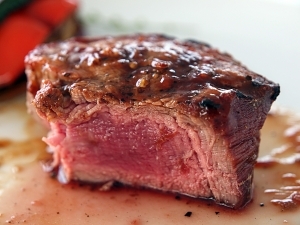Contrary to a popular notion among novice gardeners, they do require a certain amount of care. Evergreens rarely require fertilizing unless, of course, they appear sickly. A good idea is to spread a mulch of compost or richly composted soil around the tree or shrub in a wide circle – and this is generally best done in the spring. By fall, it can be carefully scratched in, or it will have incorporated itself into the soil on its own.
This practice both fertilizes the evergreen and provides a mulch for conserving much-needed moisture. Evergreens need a lot of water, but not so much that their soil becomes too waterlogged and airless. So be careful if your soil is very heavy – it holds moisture very well. The lighter and more porous the soil, the more moisture is needed.
You’ll find that evergreens require less water when they have stopped actively growing, as in the late summer for most. Then they are busy ripening and hardening off the new wood they have produced that growing season. As a lot of water tends to make softer, more sappy wood, less water should be given at this time to allow the wood to ripen and thus withstand the winter better in the colder areas.
Use a hand spray nozzle at the end of the hose, setting it at the most forceful jet of water it can spray, and aim downward whenever possible, toward the center of the tree or shrub. For pruning, most people rely mainly on sensors-like shears called secateurs. For cutting heavy branches, a pruning saw really should be used, but for cutting and shaping evergreen hedges, shears are needed. These also are like scissors but with long handles.
The electric models have become popular in recent years. You can shape a hedge as you like, as long as you do not trim it wider at the top than at the bottom. This is common sense if you think about it. If the top branches spread out wider and shade out the bottom branches, you will soon be left with denuded branches at the lower portion of each plant. So taper the hedge inwards from the bottom, leveling off the top or rounding it off, as you prefer.
Firs, pines and spruces start growing early in spring and usually slop growing in early summer. So, logically, they should be pruned early in spring so that new foliage will cover in the pruned-out branches soon. Evergreens that produce candles of new growth, like the mugho pine, can be easily shaped as you like.
If you want them to grow straight up, then leave the candles. If you want them to bush out into a more rounded shrub, cut the candles half off while the candles are still soft. At the cut, the foliage will bush out. Other evergreens continue to grow most of the summer – like junipers – and so they can be pruned at anytime during their growing season, except toward the end of summer, simply because you don’t want to send the tree into winter with fresh cuts and new growth, both of which facilitate winter killing in colder areas.
http://www.landscapingideasonline.com/planting-evergreens.php




